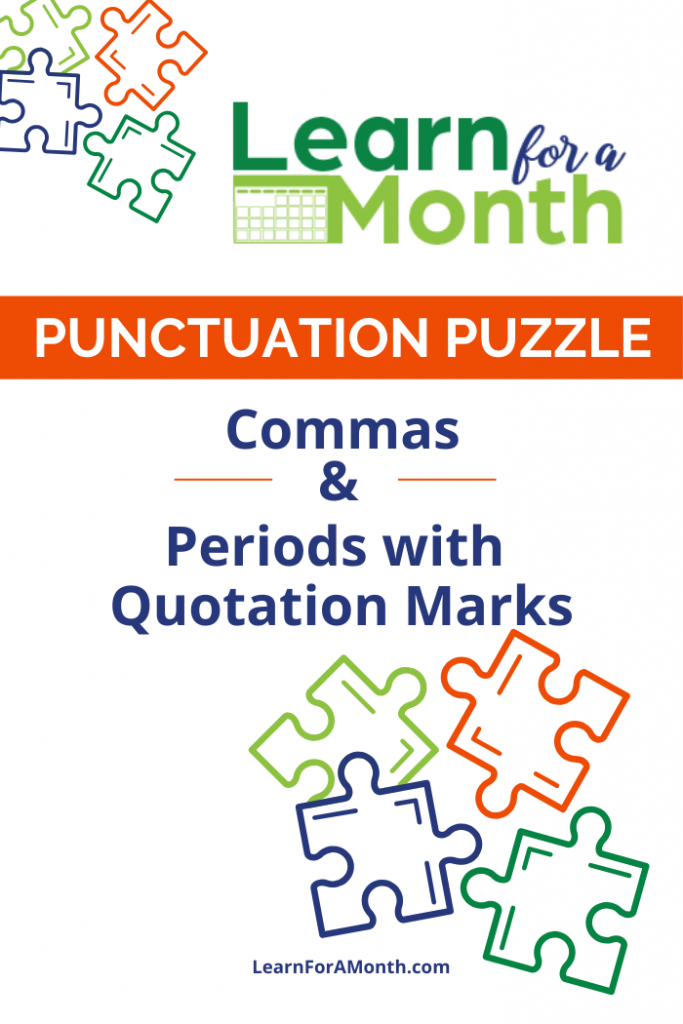Okay…here is another Punctuation Puzzle for you to solve! Try to figure out where punctuation marks should go–before you look below at the answers/explanations! Smile…
I read the magazine article titled “Baby Games” and I read an encyclopedia essay called “Baby Showers”
Okay….are you ready?
Proper punctuation of that sentence is as follows:
I read the magazine article titled “Baby Games,” and I read an encyclopedia essay called “Baby Showers.”
Here is why the punctuation is the way it is:
1. “Baby Games” is the title of a magazine article; an article is a minor work (a work within a work–in this case, an article within a magazine). Minor works are shown by surrounding the title in quotation marks.
I read the magazine article titled “Baby Games,”
2. You need a comma before the AND because this sentence is a compound sentence (Complete Sentence {CS}, and Complete Sentence {CS}). One way you can combine two sentences into one to create a compound sentence is to use a comma-coordinating conjunction (,cc–,for/,and/,nor/,but/,or/,yet/,so). Always test to see if you are really creating a compound by reading each “half” of the sentence by itself–and ask yourself if it could stand alone.
I read the article titled “Baby Games,” and I read an encyclopedia essay called “Baby Showers.”
3. In the US, a comma ALWAYS goes inside a closing quotation mark (whether it is part of the quoted material or not). (This is not the case in British writings.)
“Baby Games,”
4. “Baby Showers” is the title of an encyclopedia essay; an essay is a minor work (a work within a work–in this case, an essay within an encyclopedia). Minor works are shown by surrounding the title in quotation marks.
“Baby Showers.”
5. In the US, a period ALWAYS goes inside a closing quotation mark (whether it is part of the quoted material or not). (This is not the case in British writings.)
“Baby Showers.”


